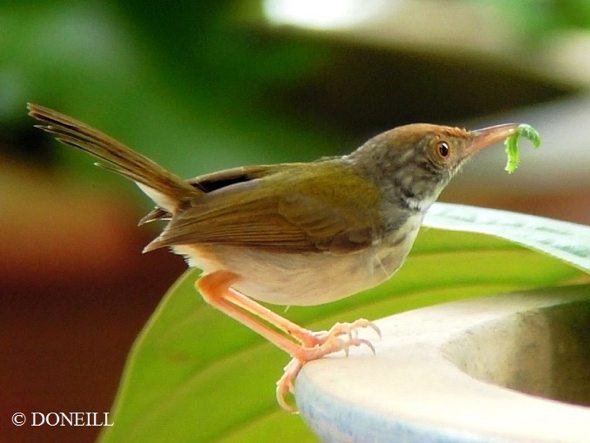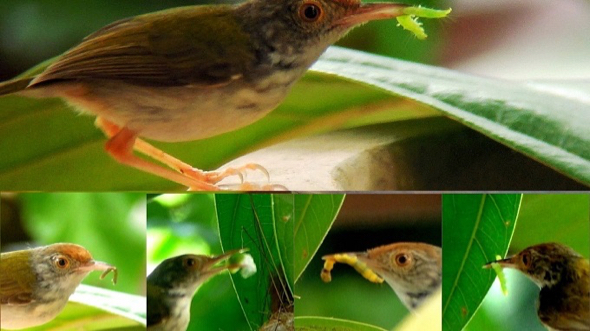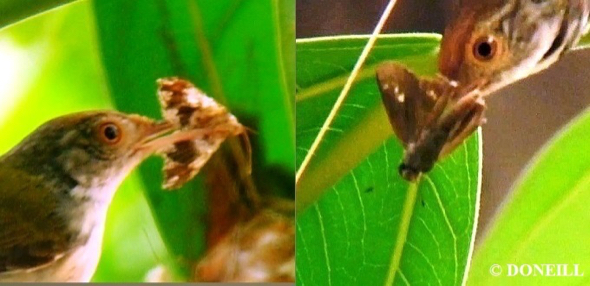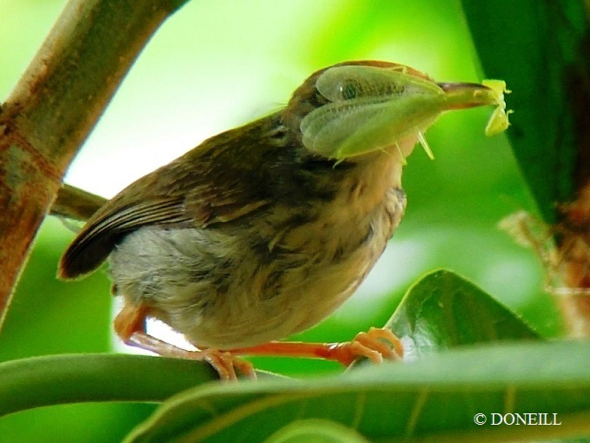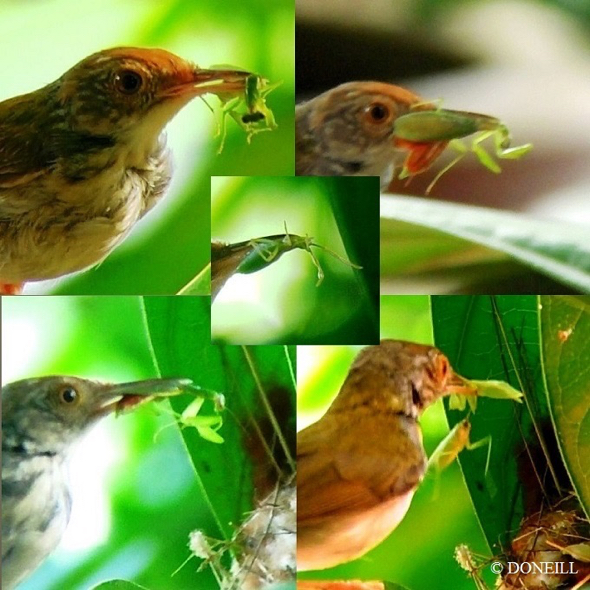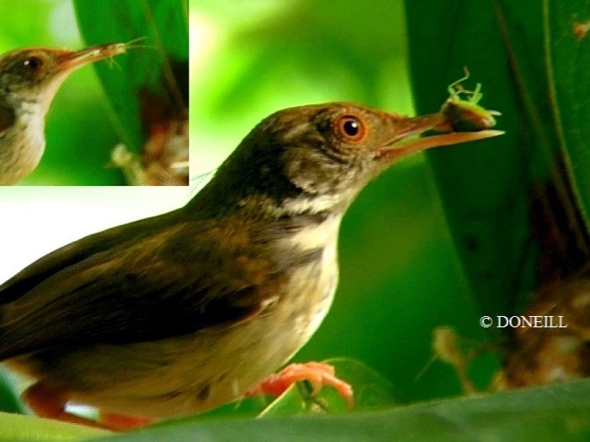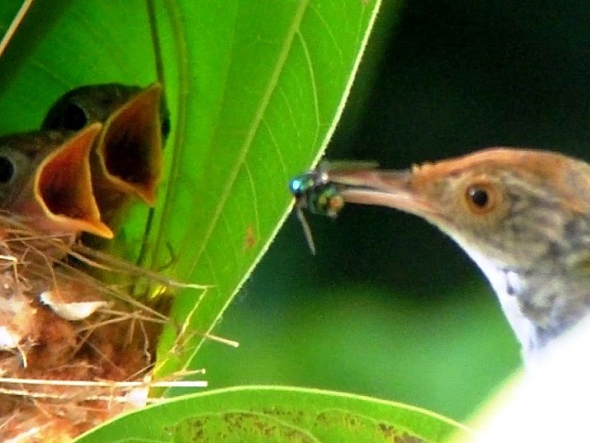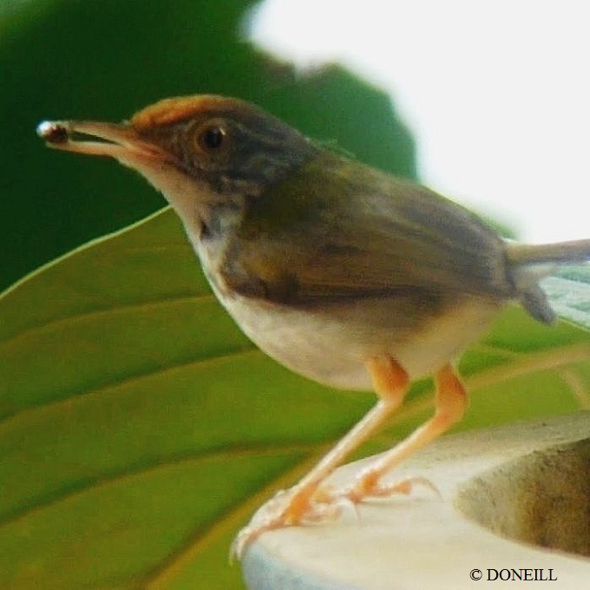Part 1; Part 2; Part 3; Part 4; Part 5; Part 6; Part 7: Nature’s Foods for Tailorbird Chicks – A pictorial (1).
“Common Tailorbirds (Orthotomus sutorius) are mainly foliage gleaners and also food collectors of lower or ground levels in a tropical habitat.
“While no fruits or herbivorous food materials were observed taken, nor be identified in this breeding season (April-May 2019) of Otto (male) and Satori (female), food gifts of tiny invertebrates, arthropods, eggs and larvae of insects and insect species of Hymenoptera Order, collected for their chicks were simply impressive and extensive.
“Apart from David R Wells’ mention of caterpillars, grasshoppers and small moths (The Birds of the Thai-Malay Peninsula), hardly any space was given to mention food diets of these creatures in most field guide bird books.
“A search commenced and further contributions of worm, praying mantis, termites, cricket, spiders, bug, bee, houseflies, small beetles and larvae came from field observations of BESG’s contributors – Amar Singh and KC Tsang and contributors from the IBC.
“I hope to provide some statistical numbers in my summary; but let’s get on with some of these pictures – many are clips painstakingly extracted from videography and photo shopped to best clarity.
“Considering these small birds with bills only 12-15mm long, with most prey hardly noticeable to the naked eye, the use of DGscope x 30 magnification was useful. Photography distance was 10 metres approx. from subject.
“My personal food contributions in pictorial forms collected over a chick-feeding period of 12 days by Otto and Satori are as follows.
“Caterpillars (Lepidopteran larvae): A total of 14 different species recorded. Best available for identification purposes posted here (above, below).
“Moth and Butterflies (Lepidoptera) the former recognised by its antennae to be feathery or saw-edged, while antennae of latter look like pair of club sticks with bulb end. Two species of Butterflies and three species of Moths represented here (below).
“Mantids or Praying Mantis (Mantidae) in the order of Mantodea, are known by its classical ‘prayer like’ posture of folded forelimbs. Body parts range from brown to green thus providing excellent camouflage in their living habitat from predators.
“No species of insects are known to be capable of rotating their heads 360 degrees except the Mantis. Despite being so and with two large eyes on their triangular heads for maximum viewing advantage, they were no match for tailorbirds – Satori and Otto’s snaring skills.
“Here is Otto peering through a semi-transparent wing membrane of a Praying Mantis species with an exchanged, hither spying look from my lens: ‘I SEE…YA’ (below).
“No less than four species and 11 food servings of Mantids were snared. Some arrived stripped off its wings, another disjointed but all dead or concussed and got swallowed whole by chicks. Some Mantis foods collated in montage presented here (below).
“Grasshoppers (Caelifera): Belonging to family of Acrididae in the Orthoptera Order and recognisable by possessing extra-long hind legs and pair of large, compound eyes. They are chewing herbivores. These ancient creatures are good listeners with hearing organs on sides of abdomen and make sounds by winged stridulation. Eight grasshoppers of six species turned food prey to Otto and Satori (below).
“Satori seen here with grasshopper species and heading for doom (below).
“FLY – Diptera derived from Greek word ‘two winged’ classified as an Order.
They possess pheromones – specialist foot testers of foods; have hindwings -halteres for advanced acrobatic displays and padded feet with claws to cling onto smooth surfaces. Their mandibles are modified into suction apparatus designed to suck up semi/fluids.
“Life span of flies is known to be from two to four weeks and possibly more in hibernation. The lives of fifteen flies of two known species were hastily brought to premature deaths when caught by Otto and Satori, who hastily had them chased down the throats of their brood.
“House fly (Musca domestica) – 14 servings were provided to chicks (below).
“Green Bottle Fly (Lucilia sericata) single serve was brought by Otto – a probable new food record (below).
“BEETLE – Belonging to the Coleoptera Order, came oval shaped with front pair wings hardened to form elytra. A small, black, unknown beetle species was picked by Satori to equal Otto’s singular prey count (below).
“To be continued…”
AVIAN WRITER DAISY ONEILL
PENANG MALAYSIA
Copy of Copyright article and all copy images – Courtesy of Daisy O’Neill Bird Conservation Fund


